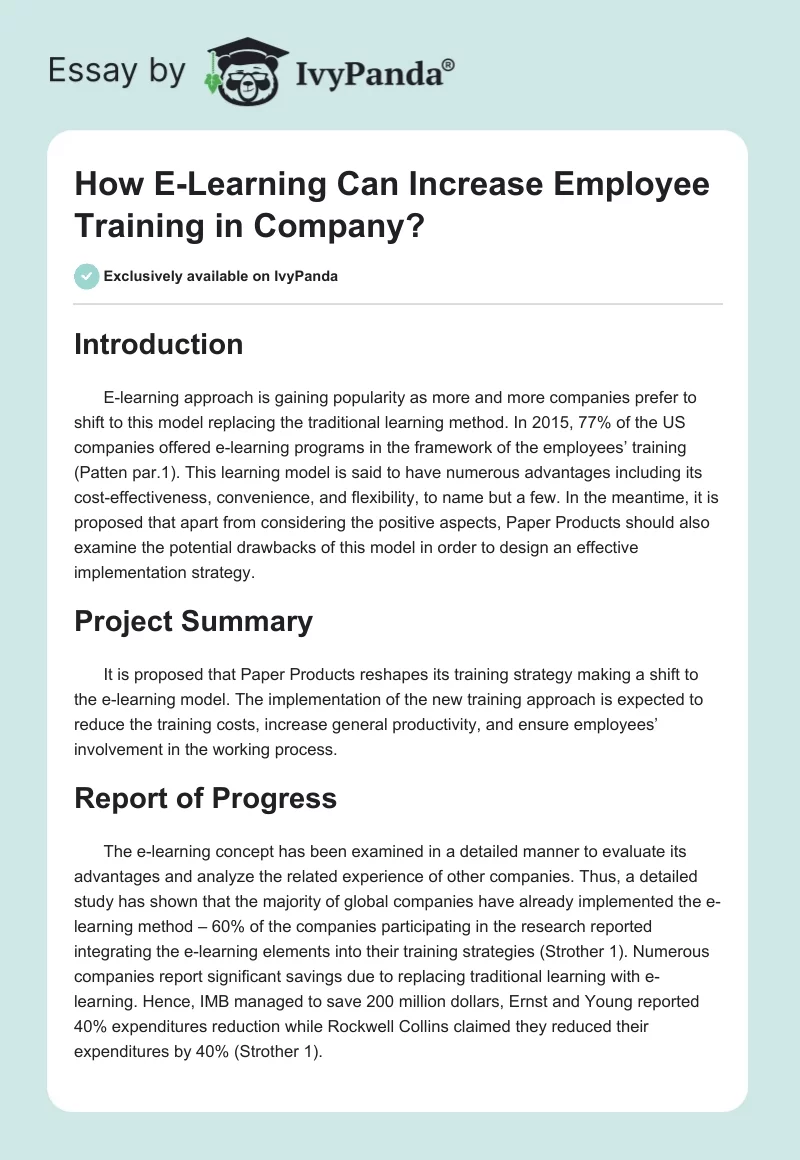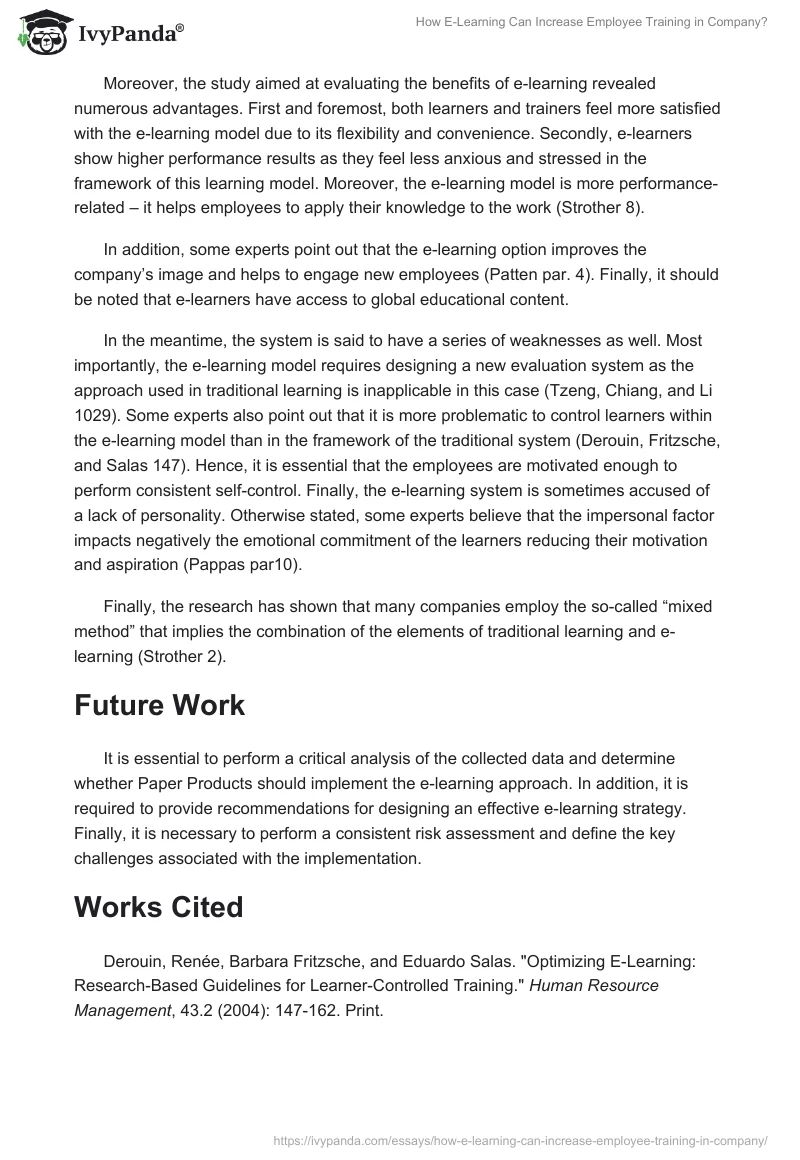Introduction
E-learning approach is gaining popularity as more and more companies prefer to shift to this model replacing the traditional learning method. In 2015, 77% of the US companies offered e-learning programs in the framework of the employees’ training (Patten par.1). This learning model is said to have numerous advantages including its cost-effectiveness, convenience, and flexibility, to name but a few. In the meantime, it is proposed that apart from considering the positive aspects, Paper Products should also examine the potential drawbacks of this model in order to design an effective implementation strategy.
Project Summary
It is proposed that Paper Products reshapes its training strategy making a shift to the e-learning model. The implementation of the new training approach is expected to reduce the training costs, increase general productivity, and ensure employees’ involvement in the working process.
Report of Progress
The e-learning concept has been examined in a detailed manner to evaluate its advantages and analyze the related experience of other companies. Thus, a detailed study has shown that the majority of global companies have already implemented the e-learning method – 60% of the companies participating in the research reported integrating the e-learning elements into their training strategies (Strother 1). Numerous companies report significant savings due to replacing traditional learning with e-learning. Hence, IMB managed to save 200 million dollars, Ernst and Young reported 40% expenditures reduction while Rockwell Collins claimed they reduced their expenditures by 40% (Strother 1).
Moreover, the study aimed at evaluating the benefits of e-learning revealed numerous advantages. First and foremost, both learners and trainers feel more satisfied with the e-learning model due to its flexibility and convenience. Secondly, e-learners show higher performance results as they feel less anxious and stressed in the framework of this learning model. Moreover, the e-learning model is more performance-related – it helps employees to apply their knowledge to the work (Strother 8).
In addition, some experts point out that the e-learning option improves the company’s image and helps to engage new employees (Patten par. 4). Finally, it should be noted that e-learners have access to global educational content.
In the meantime, the system is said to have a series of weaknesses as well. Most importantly, the e-learning model requires designing a new evaluation system as the approach used in traditional learning is inapplicable in this case (Tzeng, Chiang, and Li 1029). Some experts also point out that it is more problematic to control learners within the e-learning model than in the framework of the traditional system (Derouin, Fritzsche, and Salas 147). Hence, it is essential that the employees are motivated enough to perform consistent self-control. Finally, the e-learning system is sometimes accused of a lack of personality. Otherwise stated, some experts believe that the impersonal factor impacts negatively the emotional commitment of the learners reducing their motivation and aspiration (Pappas par10).
Finally, the research has shown that many companies employ the so-called “mixed method” that implies the combination of the elements of traditional learning and e-learning (Strother 2).
Future Work
It is essential to perform a critical analysis of the collected data and determine whether Paper Products should implement the e-learning approach. In addition, it is required to provide recommendations for designing an effective e-learning strategy. Finally, it is necessary to perform a consistent risk assessment and define the key challenges associated with the implementation.
Works Cited
Derouin, Renée, Barbara Fritzsche, and Eduardo Salas. “Optimizing E-Learning: Research-Based Guidelines for Learner-Controlled Training.” Human Resource Management, 43.2 (2004): 147-162. Print.
Pappas, Christopher. What Are The Advantages And Possible Limitations Of Online Learning, 2015. Web.
Patten, Brigg. How E-Learning Can Increase Employee Training in Your Company, 2015. Web.
Strother, Judith. “An Assessment of the Effectiveness of E-Learning in Corporate Training Programs.” International Review of Research in Open and Distance Learning, 3.1 (2002): 1-17. Print.
Tzeng, Gwo-Hsiung, Cheng-Hsin Chiang, and Chung-Wei Li. ” Evaluating Intertwined Effects in E-learning Programs: A Novel Hybrid MCDM Model Based on Factor Analysis and DEMATEL.” Expert Systems with Applications, 32.4 (2007): 1028-1044. Print.


